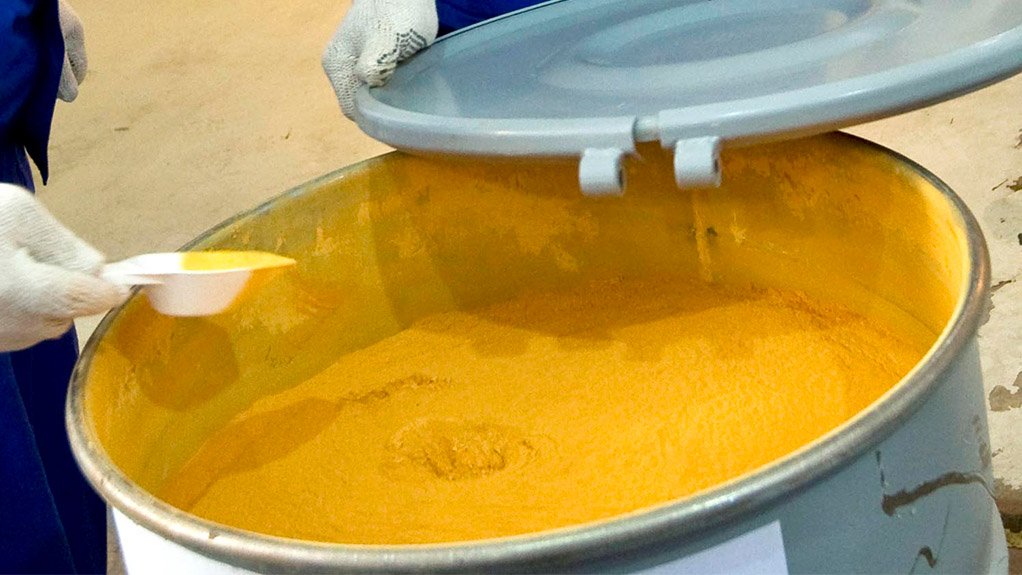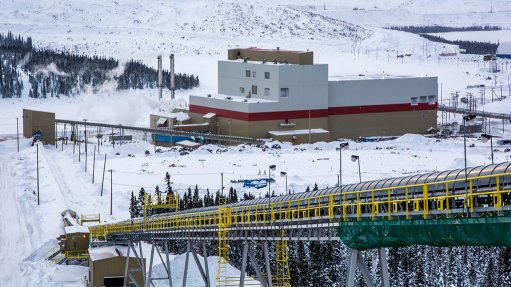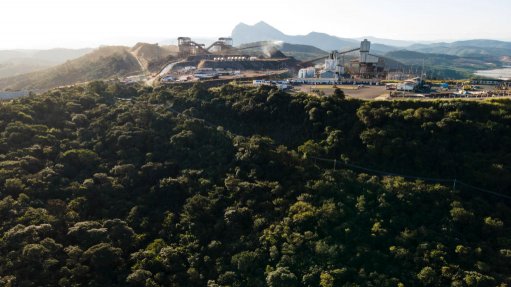Global uranium production to recover this year, says GlobalData
Global uranium production is expected to recover by 3.1% to reach 51 200 t this year, as a result of the return to production of the Cigar Lake mine, in Canada, as well as at other mines where operations were suspended during 2020, says data and analytics company GlobalData.
It notes that output growth from Kazakhstan (+15.5%) and Russia (+5.2%) will contribute significantly to the overall growth.
In contrast, production will continue to decline in Australia (-21.2%) owing to the closure of the Ranger mine.
“Global uranium production has been limited in recent years, mainly due to a sluggish market. This was further impacted by the Covid-19 pandemic from early 2020. In fact, global production of uranium fell by 9.2% to 49 700 t in 2020.
“The most significant declines were observed in Canada (43.9%) and Kazakhstan (14.6%). Globally, almost 60% of uranium originates from these two countries,” comments GlobalData associate project manager Vinneth Bajaj.
In March 2020, Canada’s Cigar Lake mine, which accounts for 12% to 13% of global production, was suspended to contain the outbreak of Covid-19. The suspension stayed in place until September 2020, but operations were again halted in mid-December 2020 because of the increasing risks of infections.
The mine reopened in April this year.
In April 2020, Kazakhstan reduced activities at all uranium mines across the country for nearly four months.
The pandemic also led to restrictions in other countries, including Australia, Namibia and South Africa.
Gradually, however, restrictions began to ease towards the end of the third quarter, with several companies having resumed production.
Meanwhile, GlobalData estimates that global uranium production will grow at a compound annual growth rate (CAGR) of 6.2% from 2021 to 2025 to reach 65 200 t in 2025.
Kazakhstan, which holds some of the world’s largest uranium deposits, is expected to remain the world’s largest supplier for the next few years.
With potential openpit uranium mines, Namibia is also expected to remain a prominent supplier of uranium to the global markets.
Furthermore, the restart of Cigar Lake, in April 2021, is expected to provide a much-needed boost to Canada’s uranium supply, highlights Bajaj.
The impact of the Covid-19 pandemic on the global nuclear industry was relatively minimal because of an early implementation of safety measures, thereby ensuring operations continued with minimal disruption, GlobalData indicates.
“These actions enabled companies to effectively manage their workforce and the resources required to keep operations running. The refuelling of reactors normally takes place every 12 to 18 months (unlike conventional fossil fuel plants that require constant supply), even when strict social restrictions are in place.
"Meanwhile, planned outages and expansion works at many reactors were delayed during early 2020 and, instead, companies focused on electricity generation anticipating higher demand later in 2020," Bajaj explains.
GlobalData notes that there has been recent optimism surrounding the global nuclear industry, with several governments incorporating nuclear energy into their plans for reaching climate goals.
For instance, the US is evaluating extending the operating life of its nuclear power plants for up to 100 years. The plants were initially licensed for up to 40 years, but this would permit renewals for up to 20 years with every renewal application.
Other countries such as China, Japan and South Korea, as well as the European Union, all upgraded their climate change policies during 2020, indicating higher demand for nuclear power going forward – alongside higher electricity generated from sources other than coal, the company says.
Comments
Press Office
Announcements
What's On
Subscribe to improve your user experience...
Option 1 (equivalent of R125 a month):
Receive a weekly copy of Creamer Media's Engineering News & Mining Weekly magazine
(print copy for those in South Africa and e-magazine for those outside of South Africa)
Receive daily email newsletters
Access to full search results
Access archive of magazine back copies
Access to Projects in Progress
Access to ONE Research Report of your choice in PDF format
Option 2 (equivalent of R375 a month):
All benefits from Option 1
PLUS
Access to Creamer Media's Research Channel Africa for ALL Research Reports, in PDF format, on various industrial and mining sectors
including Electricity; Water; Energy Transition; Hydrogen; Roads, Rail and Ports; Coal; Gold; Platinum; Battery Metals; etc.
Already a subscriber?
Forgotten your password?
Receive weekly copy of Creamer Media's Engineering News & Mining Weekly magazine (print copy for those in South Africa and e-magazine for those outside of South Africa)
➕
Recieve daily email newsletters
➕
Access to full search results
➕
Access archive of magazine back copies
➕
Access to Projects in Progress
➕
Access to ONE Research Report of your choice in PDF format
RESEARCH CHANNEL AFRICA
R4500 (equivalent of R375 a month)
SUBSCRIBEAll benefits from Option 1
➕
Access to Creamer Media's Research Channel Africa for ALL Research Reports on various industrial and mining sectors, in PDF format, including on:
Electricity
➕
Water
➕
Energy Transition
➕
Hydrogen
➕
Roads, Rail and Ports
➕
Coal
➕
Gold
➕
Platinum
➕
Battery Metals
➕
etc.
Receive all benefits from Option 1 or Option 2 delivered to numerous people at your company
➕
Multiple User names and Passwords for simultaneous log-ins
➕
Intranet integration access to all in your organisation




















